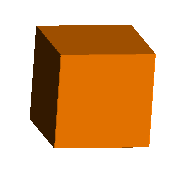Cleaning Pyrites
from
The Rock Dobber, Outcroppings, Pinellas Geological Society

First, let your pyrites soak in water until the chalk is soft (if it has had time to harden after being collected) enough to pick off with an ice pick.
After removing as much of the chalk as you can by this method, place the pyrites in a plastic bucket and cover with a known amount of water. Carefully add acid to the water.
Keep in mind the Triple-A Rule when working with any acid any where: Always Add Acid. This means you should always add the acid to whatever you are using to dilute the acid. Never ever add the other material to the acid. Also keep in mind that acids can be very dangerous. Always use caution. Wear rubber gloves. Do not breathe the fumes. Do not rinse acids in your sink. And Always Add Acid.
We have used muriatic acid, which can be purchased at lumber yards and swimming pool supply stores. It is a 32 percent solution of hydrochloric acid. Add enough muriatic acid to the bucket to make about a solution of about two parts of water to one part of acid. This acid solution dissolves the remaining chalk on the specimen. This solution will "boil" as the acid is added, but don't be alarmed. As soon as the solution stops its action -- it no longer appears to be "boiling" -- flood the bucket with running water to remove the remainder of the solution. Be careful about where the runoff water goes. The runoff can damage drains, shoes, clothing and more.
Using rubber gloves, remove the pyrites and rinse them again in running water. This will enable you to safely examine them for any remaining traces of chalk. If any chalk is found, repeat the process with a fresh solution of acid and water, always remembering to rinse the specimen thoroughly.
If you wish your specimens to have a shiny, silvery color, you can then immerse them in a solution of oxalic acid. This acid can be purchased in crystal form by the pound at many drug stores. To mix a solution, add 1/2 pound of crystals to one gallon of water. Let the pyrites stand in this solution until they have reached the brightness you wish. This can take from 30 minutes to several hours.
Remove the pyrites, again using rubber gloves, and rinse them in running water. Then neutralize them in a mixture of water and baking soda or ammonia. They will be a beautiful, shiny, silvery color.
For those who wish to prevent the specimens from turning again, a plastic spray will usually keep them silvery. However, oxalic acid will shine them up again, if you don't use the spray. Some people like the colors that develop in the specimens and do not wish to shine them up. The choice is, of course, yours.

Copyright © Georgia Mineral Society, Inc.
